8+ Sample Art Event Proposal
-
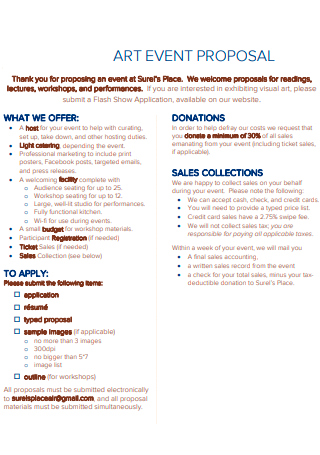
Art Event Proposal Template
download now -

Art Center Event Proposal
download now -
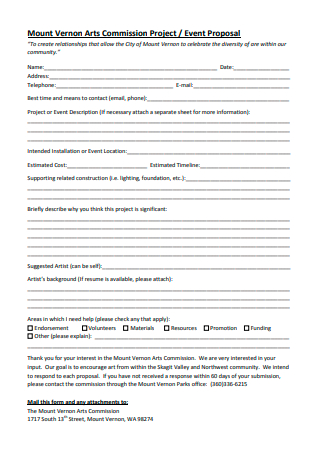
Art Commission Project Event Proposal
download now -
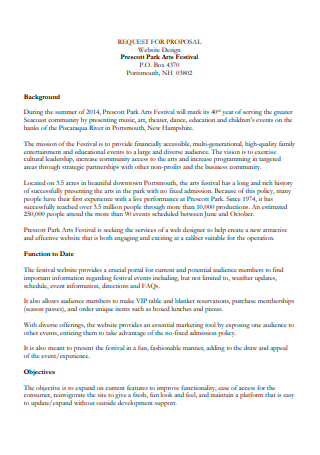
Art Event Festival Proposal
download now -
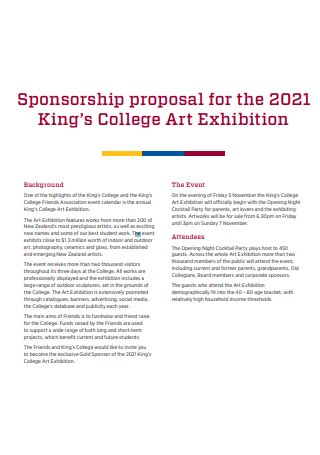
Art Event Exhibition Proposal
download now -
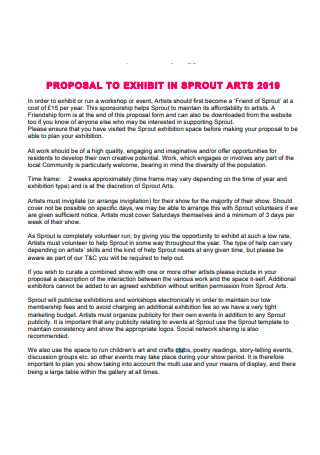
Basic Art Event Proposal
download now -
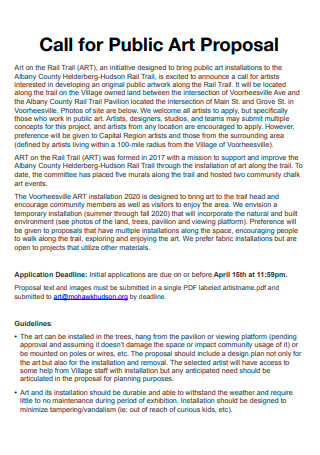
Public Art Event Proposal
download now -
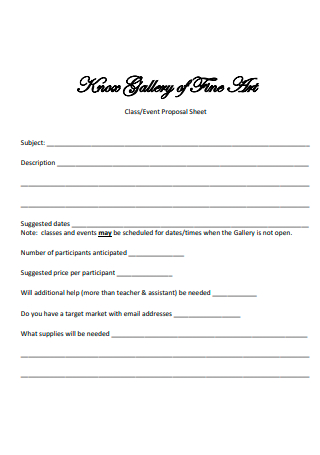
Art Event Proposal Sheet
download now -
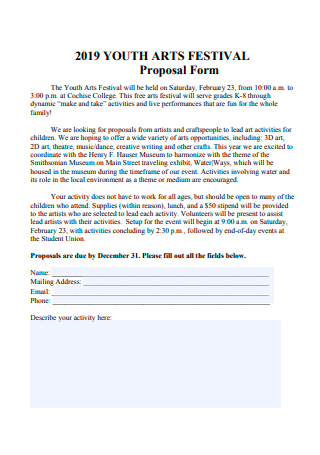
Youth Art Event Festival Proposal Form
download now
What Is an Art Event Proposal?
An art event proposal is a document that states the purpose to hold an art exhibition or art events. An art event could be held to raise funds for an art club or an individual. It could also be for networking purposes. Most importantly, to earn a commission and sell the showcased arts. Some art events are even organized as a volunteer project or as a sponsored event as part of a festival. The elements of the event, such as the timetable and programs, are included in the art event proposal. Art events also include services such as teaching a group how to do art. Organizing an event to take attendees on a tour of an art display is another option.
Art events may be both enjoyable and profitable. After all, despite some degree of digitalization of art, the global art business is booming. According to Statista’s most recent art market figures, there is a whopping 31.4 million volume of art transactions worldwide. Not only that, but the worldwide art market is currently worth $50.06 billion (USD). As a result, you can comprehend the chaotic flow of art event proposals, like an event photography proposal. Although it may appear that artists are struggling, the market is nevertheless thriving. Art has always been used as a means of passing down stories and wonders. And it’s not going away anytime soon.
Types of Art Events
We are first introduced to art events during our school years or at a local non-profit fundraising event. We may have visited museums or art galleries and have been captivated by a painting or image. Art events may be a source of wonder and education. At the same time, it’s a great method to promote a new facility or venue, such as a school or museum. So, let’s dive into the types of different art events.
Advantages Of an Art Event
Participating in art events is an enjoyable activity. Regardless of whether you are a participant or an audience member. It’s a free and up-close look at stunning artworks and artists. However, if you oversee the art event, you will find it both exhausting and rewarding. Consider it like project management. Being an art event organizer takes more than one skill. However, you must consider the delight it brings to others, as well as to yourself. Here’s why:
Tips on How to Write an Art Event Proposal
There are various types of art event proposals. One of these could be a challenging solo exhibition proposal example, while the other is an ambitious curator exhibition proposal example. Just those two examples necessitate a marketing budget and a large network. However, for a modest art event proposal, it may be a little easier. And here’s how to go about it.
Tip 1: Think of a Concept
In art, concepts and themes are important. It essentially establishes the entire event. It also facilitates the creation of art by participating artists. It also serves to set the public’s expectations. An idea might be broad or narrow. A specific theme allows artists to express themselves artistically in a variety of ways. A broad one enables for the expression of individual inventiveness. As a result, depending on your target market or participating artists, you might easily center your concept on them.
Tip 2: Reach Out
So, if you’re the organizer of an art event, it’s critical that you’ve reached out to artists ahead of time. This could happen after or before you make your proposal. But, more significantly, before to an event. This is to avoid a dismal performance. Because art events may quickly get overhyped, you may have to fulfill bigger public expectations. So, if you’re looking for an artist, reach out to them or if you already have one in mind. It is critical that you contact the owner of an art gallery or other venue where the arts will be displayed too.
Tip 3: Use Simpler Terms
It is preferable to avoid utilizing jargons when writing your proposal. Jargons enable exclusive interpretation and alienation. Because this is still something you’re suggesting, not everyone in the room understands all of the terminology. Make use of simple language and concise sentences. Your idea and objective should be communicated in such a way that there is no room for misunderstanding.
Tip 4: Budget and Planned Services/Programs
A precise budget, as well as anticipated services or programs, is part of the proposal. In addition to the concepts, your clients or investors should see a financial estimate of costs and expenses. Furthermore, planning programs would lead to more ideas or alternative solutions.
Tip 5: Marketing and Promotional Ideas
Word of mouth alone will not guarantee an audience. Especially if you have previously included in your proposal the number of guests you expect to visit. As a result, there must be a marketing strategy in place to publicize the event. Posting on social media or creating promotional posters are two examples of marketing ideas. It is something that would entice the general people or artists to participate.
FAQS
What Is the Purpose of An Art Event?
Art events allow artworks to be presented in public. It aids in the development of an artist’s network. It aids in the promotion of museums and art galleries. It also serves to pique the public’s interest in art. Art events are quite important, especially in the local community. It fosters a connection and appreciation for each other’s artwork.
What Makes an Art Event Good?’
The theme and concept of an art event are what distinguishes it from other comparable events. Themes give people the impression that they are a part of something larger. It aids in the unity of several artworks by various creators. Yet, the distinction in style emphasizes a person’s creativity.
Why Do I Need to Write an Art Event Proposal?
An art event entails a plethora of obligations and complexities. The more ambiguous the idea, the less likely it is to draw an audience. A proposal is important since it helps secure funds for the event and establishes a lineup. Artists must look at the benefits of taking part in an art event. And the audience must feel as if they are a part of the event. So, a proposal for an art event makes it both official.
The price of art is proportionate to an artist’s market value. Nonetheless, it’s important to remember that an artist has their own worth, regardless of monetary value. And you could be here as a result of an art exhibition proposal assignment, or you could be an artist or organizer. Regardless, you can download sample art event proposal pdf now!
